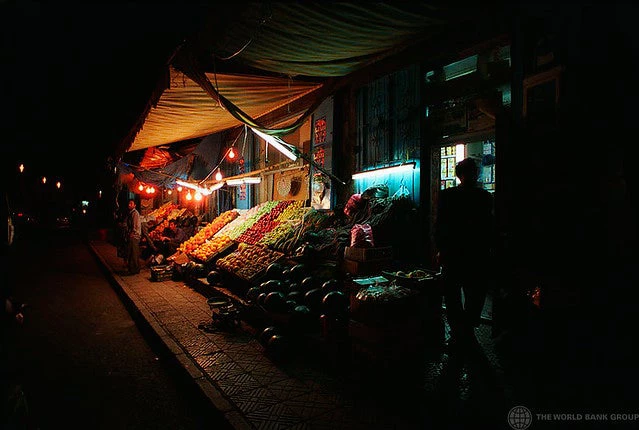
The conflict in Yemen is entering its fifth year. The humanitarian and economic costs are devastating, and the country’s ailing infrastructure is collapsing. Public electricity is almost nonexistent in many parts of the country, including Sana’a, Yemen's most populous city with more than two million people . Hospitals cannot provide many critical services, and children cannot study into the evenings.
Access to electricity has always been an issue for many households in Yemen. Little more than two thirds of the poor had access to electricity when it was last formally measured in 2014 , the lowest such rate in the Middle East.
But things deteriorated rapidly when the conflict started. In March 2015, the country’s largest power plant in Marib, responsible for powering most of the country, went offline and represented a turning point for the country’s electricity sector. The high price of power from private generators and frequent fuel shortages meant that most Yemenis were thrown into the dark.
Necessity is the mother of innovation
What followed the collapse of the public utility was a surprising and unlikely success story amid otherwise troubling circumstances.
Ingenuity and entrepreneurial spirit helped the private sector step in to fill the void left by the absence of public utilities. Several firms started importing cheap solar photovoltaic (PV) systems. The number of solar importers in the country multiplied, while many small electronic retailers started selling solar home systems, encouraged by surging demand. Solar panels started dotting more and more rooftops in Sana’a.
Today more than half of all Yemenis use solar power as their main source of lighting.
But how do we know that?
When the World Bank team had an opportunity to design a project in the energy sector in Yemen a critical challenge was to get a better understanding of the conditions on the ground, and the true reach of solar power in Yemen.
Innovative ways to measure access during conflict
Measuring electricity access has always been a challenge in Yemen but obtaining reliable data has become especially tough since the conflict started. This has been made even more difficult as Bank staff are unable to go on mission. With non-functioning public institutions, innovative measures had to be used to assess the situation on the ground.
The World Bank team went about this task in three ways – all requiring opportunistic, practical and collaborative approaches that transcended traditional team boundaries.
The first way was to use satellite imagery to evaluate the status of power generation facilities, and social media to evaluate the availability of service in different cities. This assessment could not cover rural areas, but it provided an important glimpse of the status of the sector almost in real time.
The second way was a survey with beneficiaries of a World Bank-financed cash transfer program. Two questions on household electricity access were inserted into the survey. Given the nature of the target group, the survey not only captured largely poor households in rural areas but provided an important data point for the design of the energy sector intervention.
The third method was to insert questions on electricity services into a phone survey conducted by the World Food Program in 2017. This survey focused on richer, urban households, providing another important piece of the puzzle to understand the situation on the ground.
A war-torn country powered by solar
Satellite imagery showed that nearly 55 percent of power sector assets (including transmission lines, power stations) currently have some degree of damage, while 8 percent are completely destroyed – all evidence to support our finding that grid access to electricity was dismally low in Yemen.
But the results of the surveys showed a silver lining - we found that electricity access rates in rural areas have improved during the conflict.
How?
Simply put – solar power. While the three data sources cover different aspects of the problem, they all point towards the emergence of solar as the primary and most competitive source of electricity in the country.
The results also show that poor households do not have other viable alternatives compared to richer households, who can rely on expensive private generators to power larger homes and appliances.

Left: Survey of beneficiaries of a World Bank-funded cash transfer program
Right: Phone survey carried out by the World Food Programme as part of its regular crisis monitoring
The bottom line - solar power has emerged as a beacon of light during Yemen’s darkest times and is a prime example of the Bank’s ‘building back better’ approach as the electricity sector will have to integrate distributed energy as part of any post-conflict reconstruction. Yemen’s experience can be an inspiration for war-torn countries like Syria and also for those fleeing such conditions and taking refuge in other countries.


Join the Conversation